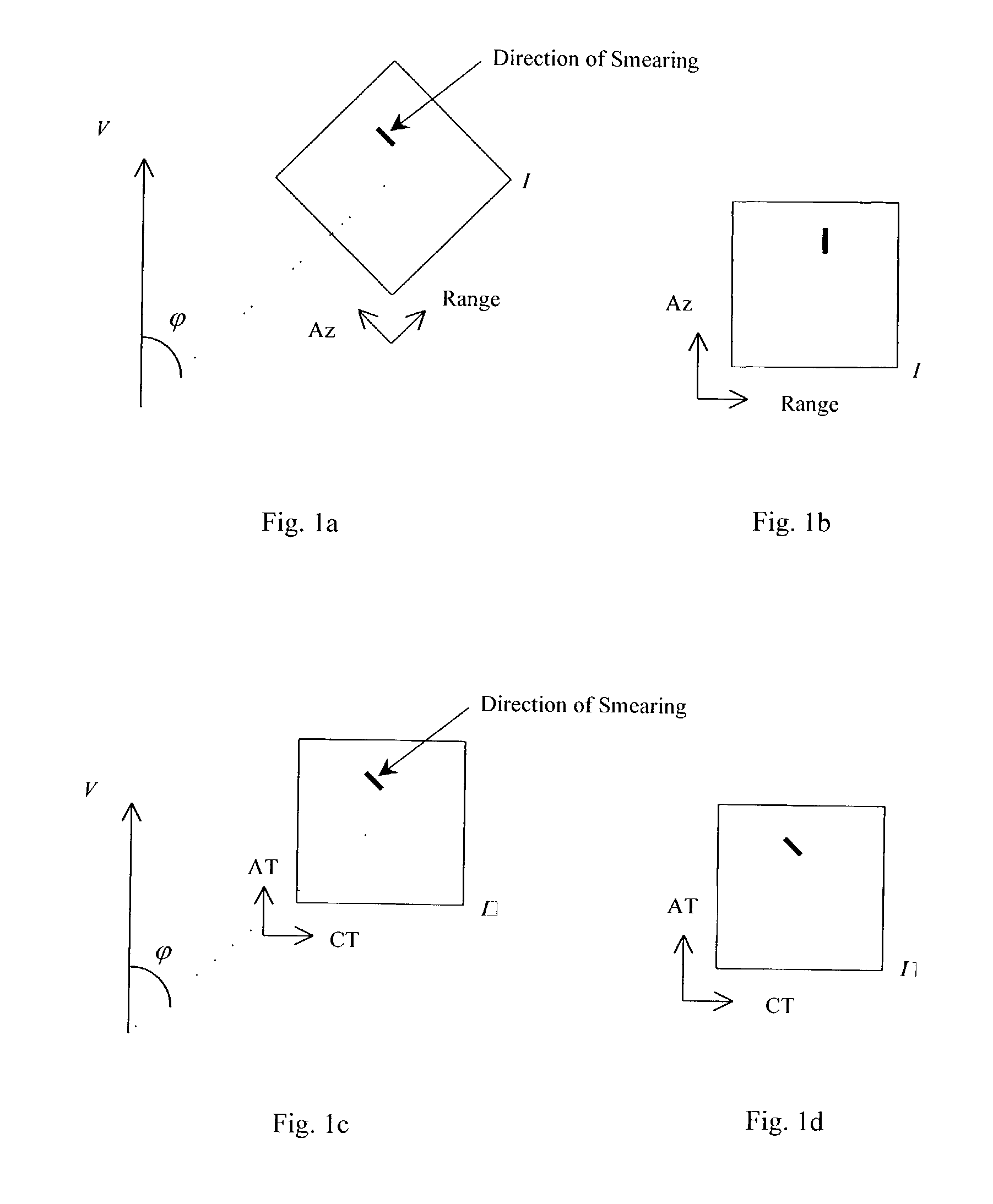Focusing SAR images formed by rma with arbitrary orientation
a sar image and arbitrary orientation technology, applied in the field ofradar signal processing systems, can solve the problems of smearing or duplication of target images, difficult to implement automatic focus functions during batch processing, and achieving efficient phase correction
- Summary
- Abstract
- Description
- Claims
- Application Information
AI Technical Summary
Problems solved by technology
Method used
Image
Examples
Embodiment Construction
[0034] Illustrative embodiments and exemplary applications will now be described with reference to the accompanying drawings to disclose the advantageous teachings of the present invention.
[0035] While the present invention is described herein with reference to illustrative embodiments for particular applications, it should be understood that the invention is not limited thereto. Those having ordinary skill in the art and access to the teachings provided herein will recognize additional modifications, applications, and embodiments within the scope thereof and additional fields in which the present invention would be of significant utility.
[0036] Uncompensated phase error in collected data for synthetic aperture radar (SAR) systems causes image smearing in the azimuth (cross-range) direction. This is due mainly to uncompensated slow motion error that occurs as the Doppler cone angle changes during the time of data collection. When SAR images are formed in the range and azimuth direct...
PUM
 Login to View More
Login to View More Abstract
Description
Claims
Application Information
 Login to View More
Login to View More - R&D
- Intellectual Property
- Life Sciences
- Materials
- Tech Scout
- Unparalleled Data Quality
- Higher Quality Content
- 60% Fewer Hallucinations
Browse by: Latest US Patents, China's latest patents, Technical Efficacy Thesaurus, Application Domain, Technology Topic, Popular Technical Reports.
© 2025 PatSnap. All rights reserved.Legal|Privacy policy|Modern Slavery Act Transparency Statement|Sitemap|About US| Contact US: help@patsnap.com



